Top 4 Training Techniques to Maximize Autoflowering Cannabis Yields
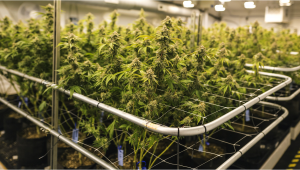
- 1. Why to perform training?
- 2. Low-stress training vs high-stress training
- 3. Lst
- 3. a. The tie-down method
- 3. b. Scrog
- 4. Hst
- 4. a. Topping
- 4. b. Fimming
- 5. Other techniques to increase your final yield
- 5. a. Environmental control
- 5. b. Light cycle and intensity
- 5. c. Boosters and additives
- 5. d. Controlling the ph of your feed water
- 5. e. Pot sizing
- 5. f. Growing with hydroponics
- 5. g. Timing the harvest perfectly
- 5. h. Using a grow journal
- 6. In conclusion
Many cannabis growers hesitate to train their autoflowering cannabis plants because they worry about slowing down growth. Typically, an autoflower does very well without training but for those who want to make the most out of each seed, it’s possible to get even better yields by using training techniques. However, have in mind that you have to employ the techniques at the right time to be able to benefit and not have the opposite effect, end up affecting your yields. Maximizing an autoflowers yields basically consists of spreading out the canopy to allow light to reach more flowering sites and airflow in between the buds.
The concerns around training autoflowering plants have some validity. Exposing your plants to high-stress methods can indeed impact growth in a negative way, which can result in poor results further down the line. However, autoflowering cannabis genetics aren’t as delicate as many growers believe; they did evolve in the harsh climes of Siberia and neighbouring regions, after all.
In fact, autos handle some training techniques very well, and growers can use these options to improve bud uniformity, canopy shape, airflow, and the productivity of their plants. It all comes down to selecting the right approach. Learn all about the very best training techniques to use on your beloved autoflowering weed plants below.
1. Why to Perform Training?
A plant’s growth is controlled by a hormone called auxins, and this hormone is usually concentrated on the top, which makes cannabis grow upwards. So these training techniques can be used to encourage your cannabis to grow horizontally, increasing the number of colas, homogenizing growth, and allowing you to shape the height and structure of your cannabis plants.
It doesn’t matter if you’re growing 2 or 20 plants, training techniques will bring several benefits to your garden, such as:
- Denser buds
- Can increase resin production
- Higher yields
- Better airflow, decreasing chances of mold.
These techniques are basically divided into two categories: Low-stress training (LST) and High-stress training (HST) and both of them will result in similar results but while HST consists of mutilating your plant, LST consists of not hurting your cannabis at all. The main goal when performing these techniques is to even out the canopy and space out the branches, allowing light to reach all flowering sites equally, and allowing air to flow in between the buds.
2. Low-Stress Training vs High-Stress Training
So, as said above, both LST and HST techniques will have similar results if performed correctly but you will have to decide on which one is better based on what type of cannabis plant you’re growing, either photoperiodics or autoflowers. As you may know, autoflowers flowering automatically because they don’t depend on the light cycle to flower so you cannot control the growth phases, unlike photoperiodic cannabis which will vegetate as long as you keep it under an 18/6 light cycle, and will only flower when you change the cycle to 12/12.
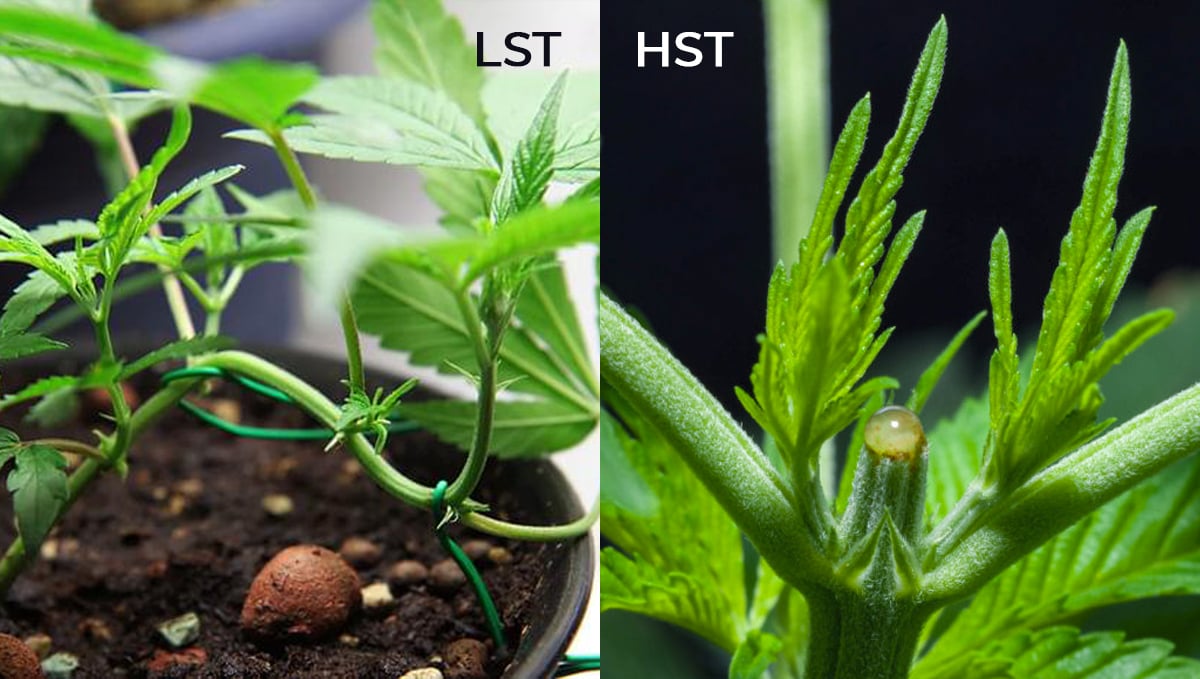
This may not seem like a huge deal but it can be because as the name says, HST (high-stress training) will stress your plant quite a bit and when talking about growing autos, you should avoid stress because your auto will need a couple of days to recover and due to the limited lifetime, it can end up growing shorter which can result in lower yields. Think about it. Many forms of stress can alter plant growth, either for short or long periods of time. While plants are used to dealing with certain forms of biotic stress, such as pathogens and insects, and abiotic stress, such as UV rays, the aggressive bending and pinching of stems poses a unique challenge.
While HST provides good results, it takes plants a while to recover from such a procedure. By nature, vegging photoperiod plants have a lot longer to bounce back from HST, especially if they’re being grown indoors. Autos, on the other hand, don’t have this luxury. Because they grow so quickly, and no light cycle adjustments can keep them in the vegetative phase, any time spent recovering from HST can impact plant growth and yield, to a degree.
Now, it is possible to perform HST on autos but it’s highly recommended that you provide the best conditions so that the recovery process goes as quick as possible and doesn’t affect your plants in a bad way but if you’re a beginner and you’re growing in less-than-ideal conditions, you should stick to LST. We recommend beginners sticking to LST because low-stress training will allow your plant to recover faster even in bad growing conditions due to not being too aggressive, just have in mind that you should experiment and reach your own conclusions but if you have just started growing and don’t want to risk your harvest, start with LST and evolve gradually.
3. LST
LST is nothing but Low-Stress With this method, you’re stressing the plants very minimally to induce more buds. It also helps if you have plants that tend to grow very tall. In a way, you’re not only making the plant yield more, but you’re also reducing the vertical space. As opposed to HST, which involves inflicted controlled damage to plant tissues, LST simply involves changing the direction in which branches grow. It’s a gentle technique that ultimately involves tying down the tip of a plant to set the main stem parallel to the soil. This causes branches to start to grow upwards towards light, in essence creating a great number of mainstems.
Growers then proceed to tie down several of these vertical branches to create even more vertical offshoots. The result? A beautiful and bushy even canopy that exposes the majority of bud sites to the light source. Instead of forming one central cola flanked by smaller flowers, LST creates a wealth of large and evenly-sized flowers—maximising yields. LST is better than other techniques because it doesn’t stress the plant too much. With autoflowers, it’s a good idea to train less since you might stunt the plant if you overdo anything. Since autoflowers have a preset cycle, they may not have a lot of time to recover if you stress them a lot. So, take fewer risks and stick to the plan.
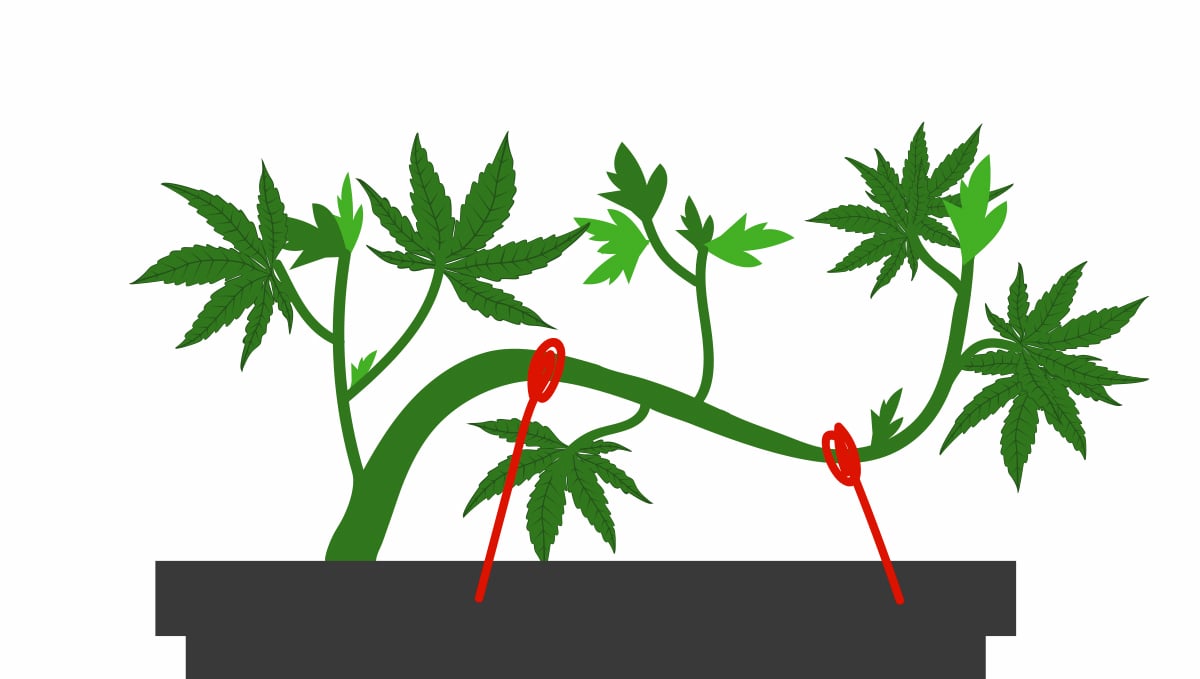
Many growers perform LST even when they don’t understand what it entails. I recommend that you first understand what the method is, rather than simply trying it. Basically, cannabis plants perform in such a way that it produces as many leaves as possible. As the flowering starts, the main goal is to create a lot of flowers. Typically, autoflowers have one main stem or cola that has the maximum amount of flowers. As your cannabis grows, all the energy is diverted to that cola. Since the artificial light or sunlight is focused mainly on that cola, it produces a lot of flowers and grows into a sturdy stem. This cola also has the potential to produce maximum amounts of seeds.
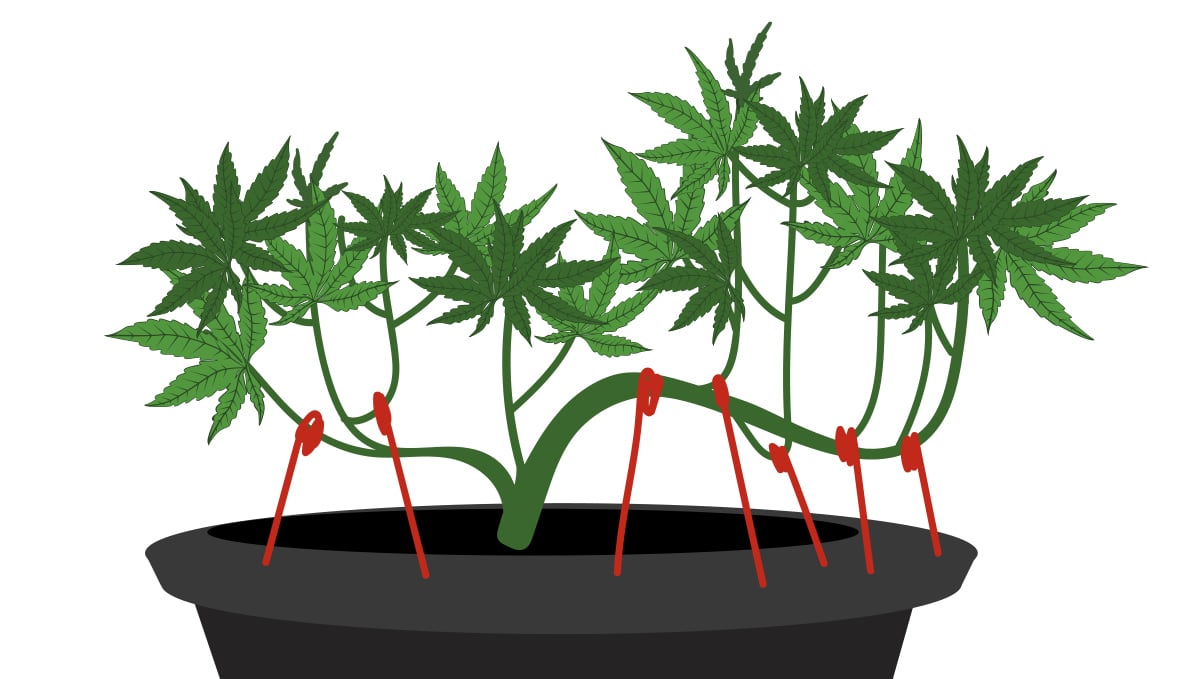
This entire process happens due to hormones known as auxins produced by the plant. The rest of the plant also contains auxins but since the main cola stretches and goes close to the light, it becomes a primary source of auxins. Now, auxins help the plant grow vigorously and you can expect excellent growth wherever the auxins are present.
In other words, the areas that get more light grow more. Most flowers are at the top and the lower parts of the plant don’t get too much light. Since the lower parts are light-deficient, they obviously produce fewer flowers. LST attempts to rectify this problem. The basic premise of this technique is to help the plants get more light.
The tie-down method
LST is performed by bending the main cola to the side of the plant. Using a wire or cable tie, the stem is pulled and tied to the container. You can LST other colas as well. This ensures that all the colas are at the same height and thus receive the same amount of light. Due to this, the auxins are also produced in a uniform manner and all the stems that are close to light will produce a lot of buds. The lower parts get more exposure to light once the main stem is pushed to the side. This way, all the parts get enough light and thus produce more flowers.
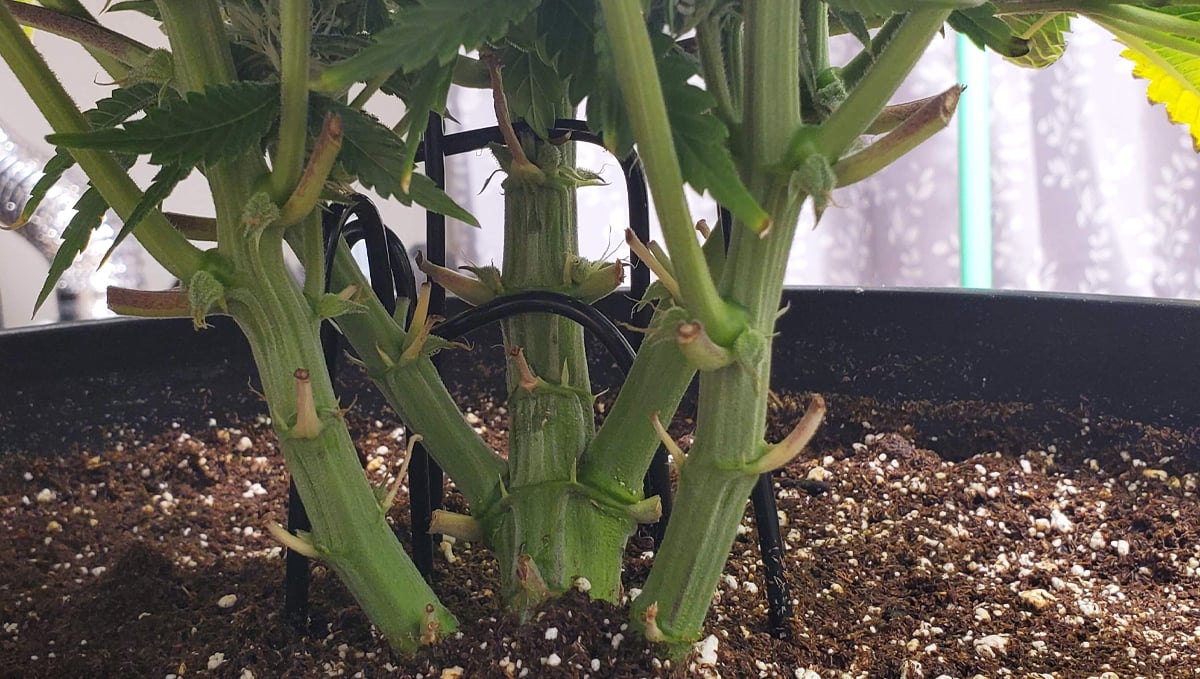
Started LST on day 21, and lolipopped her to be mainlined to 5 nodes! Grew very nicely! Tried watering her with just plain water one time mid flower... She likes food, to say the least ;) -Basementganja
In simple terms, you’re tricking the plant into thinking that all the secondary stems are main colas or stems. Once this happens, the plant will grow other stems more in an attempt to survive. In nature, the tall and powerful plants are more likely to receive or catch pollen. And the plant will do everything in its capacity to train other shoots to grow upwards. LST can be done both indoors and outdoors. However, plants growing indoors will appreciate it more. Outdoors plants have ample space and will grow no matter what you do. But growers usually face space constraints indoors and since LST helps you conserve space by reducing the vertical growth, you will benefit more.
As you can tell, this method offers an easy option for growers looking to change the shape of their plants in order to achieve better results. While easy, there are several key factors to keep in mind when performing LST on your weed plants. For one, consider the material you’re using when tying down branches. Cannabis stems are sturdy, but coarse materials such as rope and sharp metal wires can cause accidental tissue injuries. Instead, opt for soft garden ties that are designed to train plants while keeping their tissues intact. Also, don’t tie up your stems too tightly—you don’t want to strangle them!
These anatomical sites are important for a number of reasons, including structural support and nutrient and water transport. Stems continue to grow in diameter, so you’ll need to either make loose loops when training or simply make a hook that allows stems to continue to grow in size unimpeded.
SCROG
ScrOG is the short term for Screen of Green. If you use a screen to grow plants, then you’re employing the ScrOG technique. Generally, ScrOG is used for photoperiod plants where they are trained to enter the screen and then spread during the vegetative stage. However, since autoflowers have a preset cycle, ScrOG is a little difficult.
To perform ScrOG, you will need a screen that has big enough holes to allow the plant to enter. You can place the screen before positioning the plants, or you can simply place a screen after the plants have started growing. Once the plant starts growing and enters the screen, grab the main cola, and bend it gently below the screen. Now the cola will start growing horizontally for a while. But you’ll see that the cola will position itself quickly and start growing upwards again. At this point, put the cola below the screen again and the process continues.
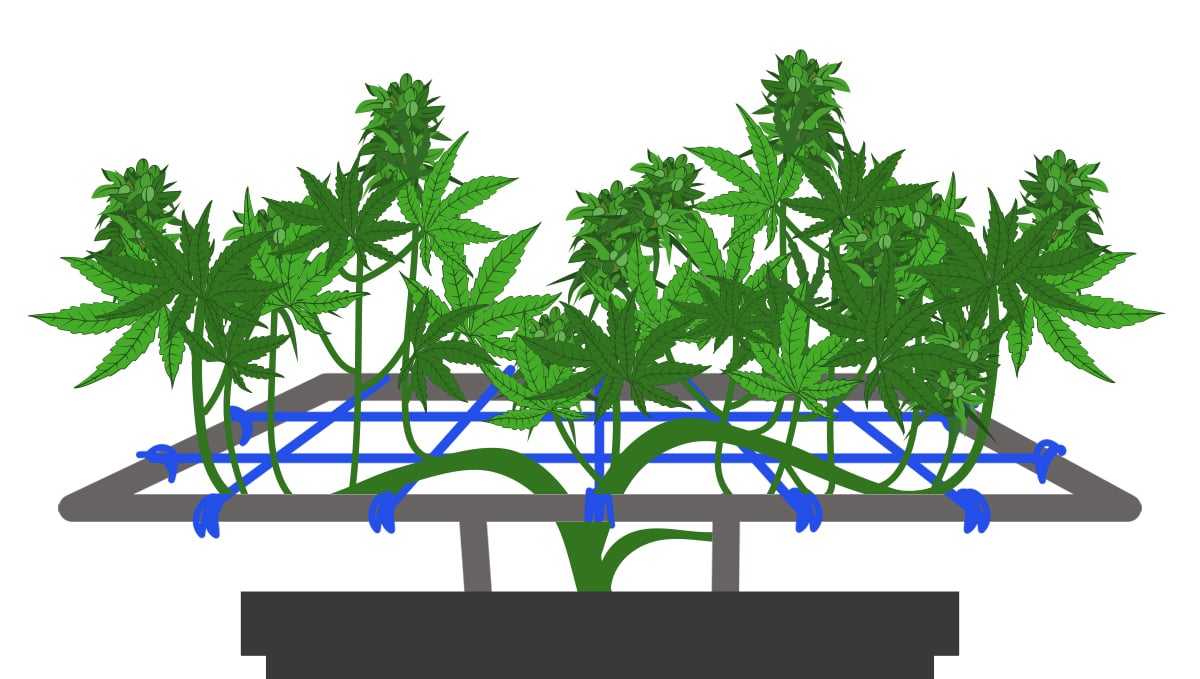
You can do this with as many colas as you want. The basic idea is to make the plant grow horizontally rather than vertically. After a while, the colas will stop growing upwards and you can stop Scrogging. Be proactive and ScrOG the plants daily to get more results.
If you stick to training the plants every day as planned, you’ll see that the screen is filled with colas. And that’s why this technique is known as the Screen of Green. There are many benefits of using this, but the main reason is that it increases the yields. Strains like our Strawberry Pie Auto and Gorilla Cookies Auto perform very well with all these techniques.
But it’s important to understand that ScrOG requires experience. Try and experiment with a few plants until you get it right. Once you understand how the method works, you’ll see that all parts of the plant receive a lot more light, and more light equals more buds. No matter what technique you use, understand the methods well before trying to train the plants. Experiment and practice until you’re sure you can do it.
4. HST
High-stress training is a training technique that involves mutilating your cannabis, this type of training is usually used in outdoor grows because it takes less effort when compared to low-stress training which should be done little by little to avoid stressing your plant. By intentionally mutilating your plant the right way, you will be able to increase bud density, quantity, and resin production, resulting in better yields and better quality of your harvests.
Topping
Generally, topping an autoflowers isn’t encouraged because many growers believe that it can reduce the growth of the plants. However, this is not true. Autoflowers aren’t actually as fragile as you imagine them to be. Unless you’re a new grower with absolutely no experience, you can top your plants and increase the buds. So, what exactly is topping? Well, as you can probably guess, topping is a method that involves cutting the tip of the main stem. This is done to create more colas. Once you identify the main stem, cut the tip using clean scissors.

Awesome growth! Topped above the second node, then Mainlined to have 6 main nodes total through lollipopping. She was trained using LST, until week2 flower. -Basementganja
Now, using clean scissors is very important since you don’t want to infect the plant with diseases. It’s also a good idea to sterilize the scissors or blade to ensure that you’re not infecting the plant. You don’t want a healthy plant to die because of your mistakes, do you? Unlike LST, Topping is actually a High-Stress Training technique. It induces a little more stress than LST and that’s perhaps why growers avoid it entirely. However, topping produces more buds than you can imagine. When you cut off the tip, the lower parts of the plant get more light. When the leaves get more light, they produce more buds and your yields increase automatically.
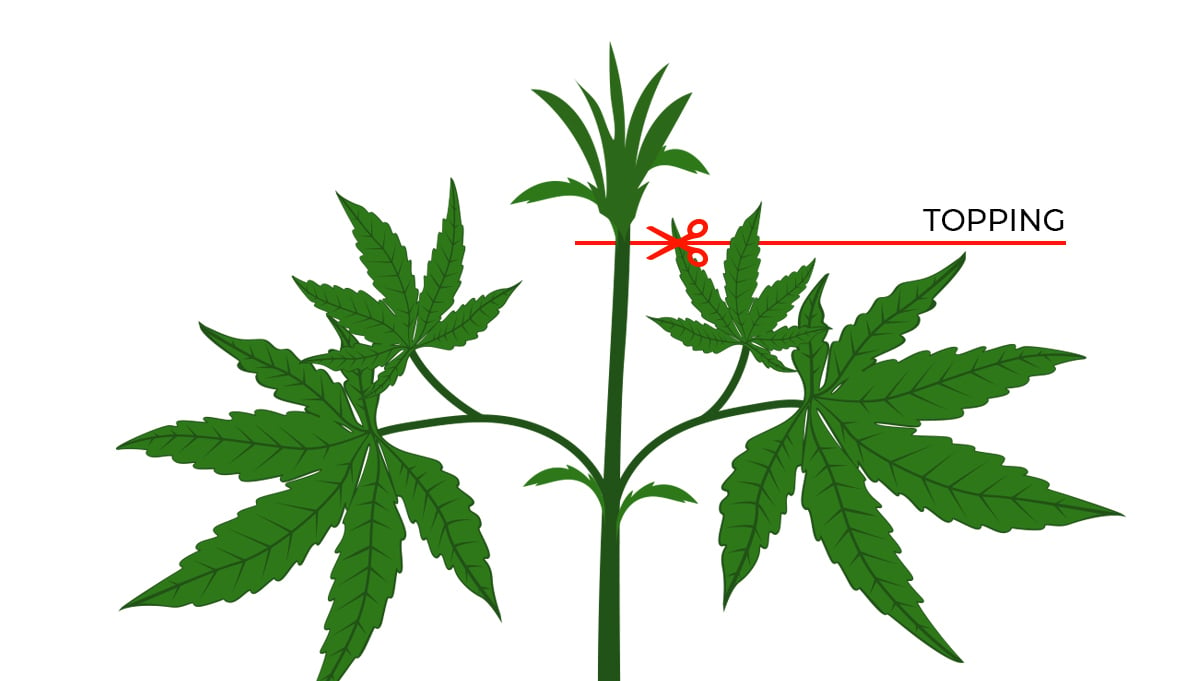
You can also top the remaining colas to make sure that the plant produces more. When cannabis plants grow normally, they produce a few colas. But when you cut off the tip, the colas multiply and you end up with more buds.
Basically, you’re stressing them to produce more, and they will comply. It’s very critical to know when to top, though. For instance, photoperiodics are topped in their vegetative stage when it's still growing. Similarly, autoflowers need to be topped when they are in their growing stage. If the plant starts producing preflowers, avoid topping because the window to train the plant has passed by already. So, try to top within the first 20 days so that it has enough time to recuperate and produce healthy, fascinating flowers.
FIMming
FIM stands for Fuck, I Missed, and this method originated when a grower who attempted to top his plants failed miserably. He failed to cut the tip entirely but was successful with FIMming. He let the plant grow as usual but was surprised when the plant developed several colas instead of two as he had originally planned.
Since then, many growers have expressed interest in FIMming and have even tried it to get exceptional results. FIMming is almost like topping, but instead of cutting off the tip of the main cola, it’s pinched in such a way that the plant still has parts of the top remaining.
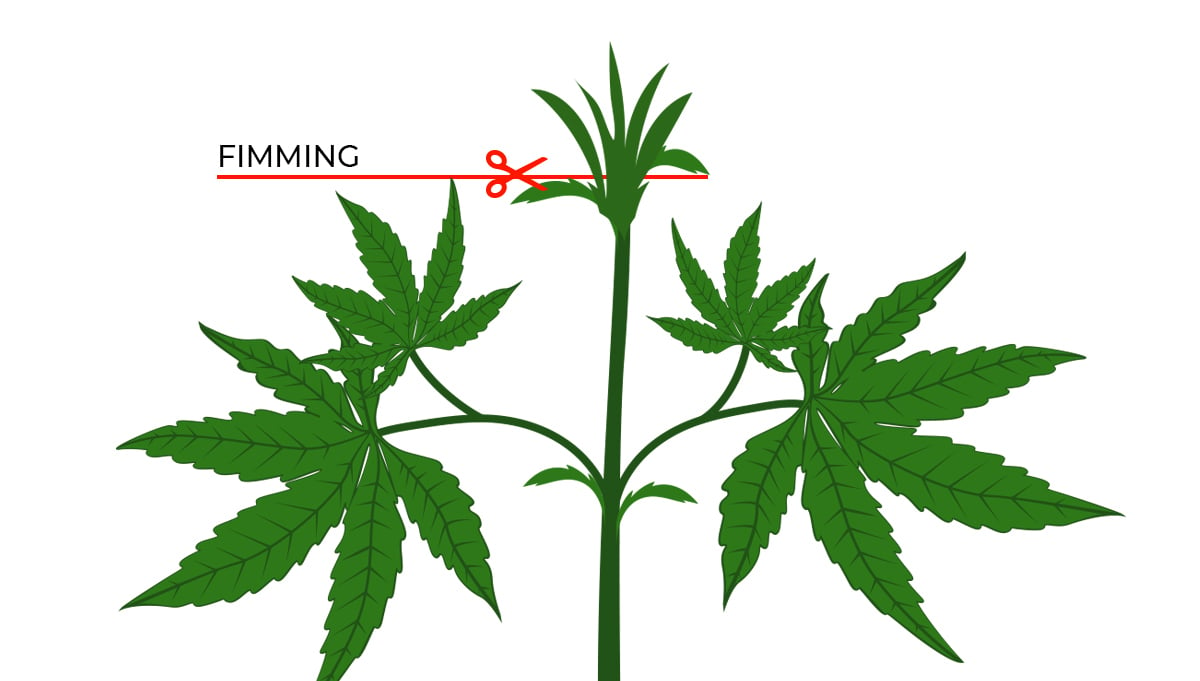
With topping, the plant produces two colas, but with FIMming, it produces a lot more. This is because the tip is pinched off and it creates not two but four more shoots. Sometimes, it can produce six colas as well. Due to the way the tip is pinched off, the auxins are diverted to other parts of the plant too.
FIMming is a lot less stressful when compared to topping because you still have parts of the tip remaining when you pinch it. Your autoflower cannabis plant will recover faster and then grow as usual. Again, it’s important to remember to FIM or top only when the plant hasn’t produced pre-flowers yet. If you see flowers, it’s best to not FIM at all. Compared to topping, FIMing produces more yields. However, if you do this when the plant is flowering, it will actually diminish the production of flowers rather than increasing it.
5. Other Techniques to Increase Your Final Yield
So, we have run through the best training techniques that can be used to boost the production of both flowers and resin with autoflowering cannabis strains (which also applies to photoperiod plants for the most part). But what else can cultivators do to boost that final yield weight as high as possible? There are a range of techniques that can be employed in the grow room to maximize yield, from enhancing the environment to controlling and manipulating light cycles, to using additives and boosters in your feed water, increasing the pot size, defoliation, adding C02 to the grow room, employing hydroponic techniques, regulating the pH of your feed water, timing your harvest correctly, and even keeping a cannabis grow journal.
Environmental Control
The ability to control the growing environment is, without a shadow of a doubt, the most productive way to increase your final yield. While weed will grow in a surprisingly wide variety of environmental conditions, it will yield its best in an environment that has been constantly monitored and maintained.
What conditions suit weed the very best?
For the most part, cannabis likes a warm and slightly humid climate. Think of a Mediterranean summer and you are on the right track. Certain strains may flourish in slightly colder or warmer conditions, but as a general rule, you want to grow in a temperature range of between 18 and 25 degrees Celsius.
Humidity is more important than temperature, however. Cannabis benefits from a relative humidity of 40-70%, and this changes as the crop grows. To begin with, freshly germinated seeds prefer a stickier situation with 70% RH being perfect. By the third week this has dropped closer to 55%, and by the end of the grow you want the humidity no higher than 45%. Good ventilation is key to yield as well. Poor ventilation can lead to inadequate air circulation and a build-up of heat, leading to stressed plants and reduced yield.
Light Cycle and Intensity
The Light cycle is the amount of light and dark that your crop is exposed to in each 24-hour period. Autos are great, as they can be grown from seed to harvest under any lighting schedule, but for the best results, we recommend sticking them under 18/6 or 20/4 from light to dark.
The 18/6 light-to-dark schedule means that for 18 hours of every day, your crop will be exposed to bright light, and to full darkness for the remaining 6. Some auto growers swear by keeping the lights on for the entire grow, but we find that you get the same results from a few hours of darkness each day. You want to also invest in the best lighting option that you can afford. LEDs lead the way these days and offer the perfect balance of light intensity, light penetration, and energy consumption. They also run way cooler than HID options, meaning the environment stays comfortable for your crop.
Boosters and Additives
The yield of your crop can also be increased by employing certain boosters and additives in the feed water. These specific nutrients or additives are designed to increase yield, potency, and terpene production. They come in a smorgasbord of options, but not all are created equally. We suggest sticking to options from major nutrient companies like Big Bud from Advanced Nutrients, Boost from CANNA, or Bud Juice from Simply Hydroponics. All three have shown great results for growers worldwide.
Controlling the pH of your feed water
One of the most important aspects for cultivators to control is the pH of any and all water supplied to the crop. This applies to both feed water and pure water. Not only is it vital for plant health, but it will also lead to vastly improved yield results as well. Cannabis prefers a pH level of between 5.5 and 6.5 if you are using coco or hydro as your grow medium or 6.0 to 7.0 for soil-based crops. The root system of cannabis must be within a certain pH range to allow the plant to properly uptake the required macro and micronutrients, and if it is not then the yield will suffer.
Pot sizing
One aspect that is often overlooked by novice growers is the pot size. It is important to have the correct size of pot for your autoflowering strains, as the last thing you want to do with autos is to transplant. Why? Simple, autos do not have the spare time to bounce back from any growth stunting from the transplanting process. It is also imperative that you give the root system enough room to fully develop if you want to get the best outta your crop. For the majority of autoflowering strains, a 3-gallon pot (around the 12-liter mark) is perfect.
Growing with hydroponics
You can see huge increases in yield and potency by switching to a hydroponic system. Hydroponics offers an unparalleled level of control over the root zone and nutrient solution, making it easier to maintain a continuously perfect environment for the crop. The yield increase is pretty remarkable when using hydroponics, with some strains seeing yield increases of up to 25% over soil-based growing. There is one downside though - you will never get the same depth and beauty of aroma when growing in hydro as is possible with organic soil-based techniques.
Timing the harvest perfectly
It's kind of wild how vastly different a few extra days of growth can make to the final yield of a crop, especially if you are pulling the plants down too early. A strain with an average flowering time of 6 weeks is a good example. If you pull the plants down say 5 days too early, you will likely see a yield loss of 20-30%. That can hurt your bottom line, so it pays to be patient and let the plant reach its optimum yield potential.
Using a grow journal
Learning to grow top-shelf cannabis doesn't happen overnight, but if you want to increase your chances of doing a better job with each and every plant then it's a great idea to use a grow journal. A grow journal will allow you to track your planting, yield, and overall performance. It also makes it easy for you to compare different setups, techniques, and nutrients to identify what's working and what isn't.
6. In Conclusion
There’s always the possibility of improving your harvest, even if you’re growing the best genetics in the market so if you’re used to growing cannabis with these techniques or any other methods, please share your experience with fellow growers, leave a comment in the comment section below!








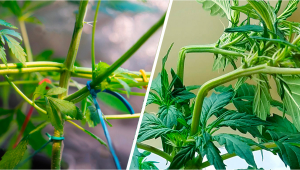

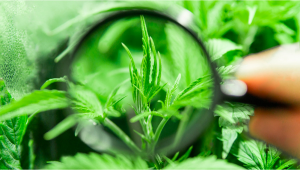
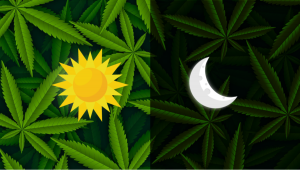
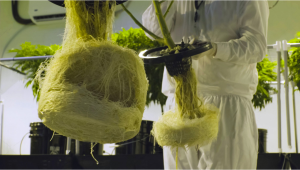


Comments